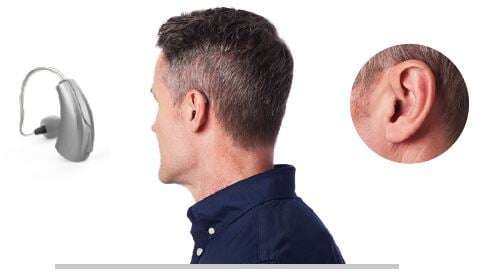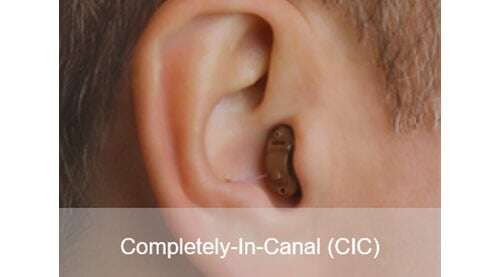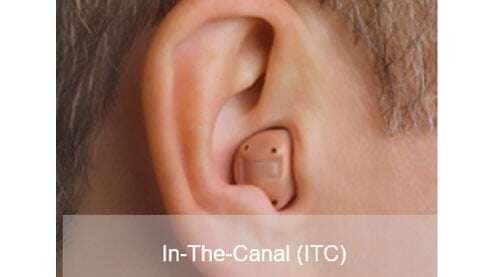Types of hearing aids
“What are the best hearing aids?” – this is a complicated question because a device packed with all the latest technology may not necessarily work for everyone.
What are the best hearing aids for you?
Book a hearing test at your local Freedom Hearing clinic now and a friendly clinician will assess your hearing.
They will consider your hearing requirements, lifestyle needs and budget to recommend the best type of hearing aids.

Popular hearing aid models
Hearing aids have come a long way as technology advances every year. More advanced features are available, all while becoming increasingly smaller and discreet. There are so many designs, colours and styles to suit your personal preference and hearing needs.

Behind-the-ear (BTE)
Suitable for all types of hearing loss, the BTE is one of the most versatile hearing aid styles.
BTEs are a lot slimmer than they used to be in the past. They also come in high power models to provide maximum amplification for more severe hearing losses.

In-the-ear (ITE)
Fits directly into the ear and although this type of aid is more visible in the ear canal, it often has easy access controls such as a memory button or volume control. As ITEs are the biggest out of the custom aid variants, they can be very useful for individuals with vision and dexterity issues (ease of insertion and cleaning, can take a bigger battery).

Receiver-in-the-canal (RIC)
RICs are smaller in design and provide comfort, discretion and natural sound quality.
Unlike traditional BTES, it utilises a wire (receiver) that extends from the case (housing) that sits behind the ear.

Micro Receiver-In-Canal (micro RIC)
This is an even smaller version of the RIC and also our most popular hearing aid style.

Completely-in-the-canal (CIC)
Sit more deeply in the ear canal hence providing the most discretion. Good for mild to moderately severe hearing losses. Users should experience less problems with wind noise. One limitation is that these aids may not be suitable for individuals who have bendy or very narrow ear canals.

In-the-canal (ITC)
Smaller than and ITE but can also include controls for memory and volume control that won’t fit on smaller hearing aids.
Book your FREE hearing check now!
What Our Customers Say
What is a digital hearing aid?
In simple terms, all hearing aids operate the same way: they pick up noise, convert the sound into electrical impulses and then forward them to the ear. The way in which hearing aids process the signal depends on whether the device is analogue or digital.
When analogue hearing aids pick up noise, they reproduce and amplify the sound via a loudspeaker. Analogue hearing aids are unable to filter out or reduce noise.
Digital hearing aids convert noise into electronic information. They have the ability to reduce loud background noise and detect which major sounds should be amplified and transmitted. This is why digital hearing aids tend to deliver improved sound quality and enhanced speech comprehension.
Digital hearing aids can be adapted to individual needs and are typically smaller than analogue models.
Why choose Freedom Hearing?
Many service providers offer free basic 15-minute hearing tests. At Freedom Hearing, we go the extra mile for you.
Our free hearing tests are comprehensive and take 60 minutes because our audiology professionals are thorough with their testing and take the time to properly discuss your results, your needs and the options available with you.
A full hearing assessment still at zero cost? That’s value that is loud and clear.

